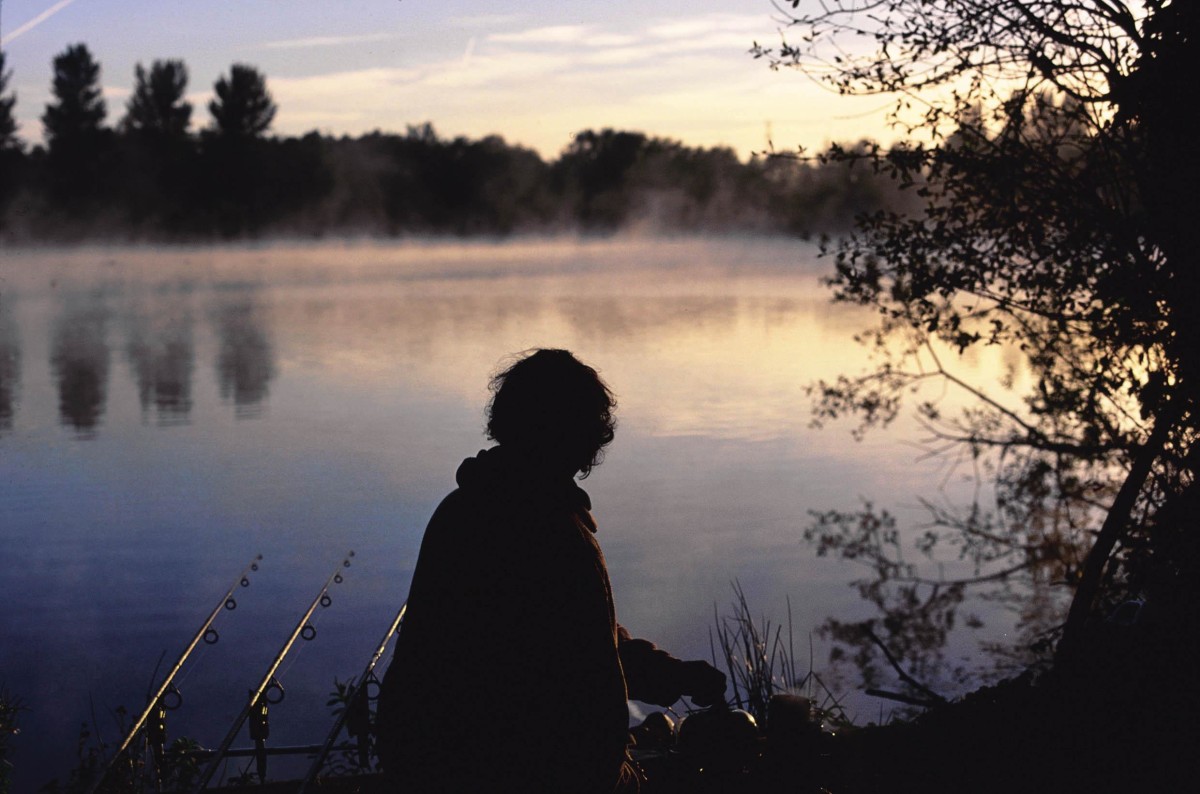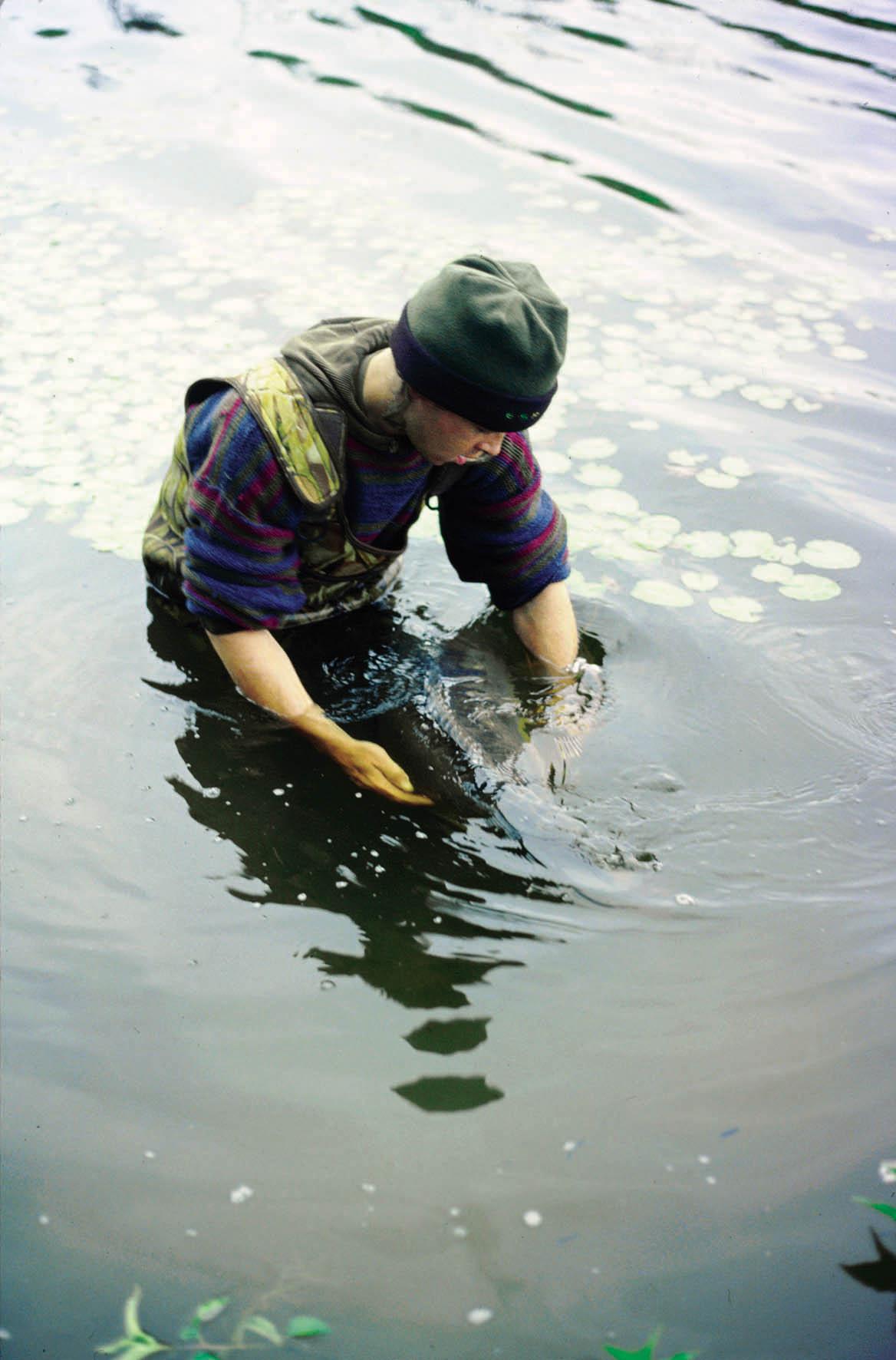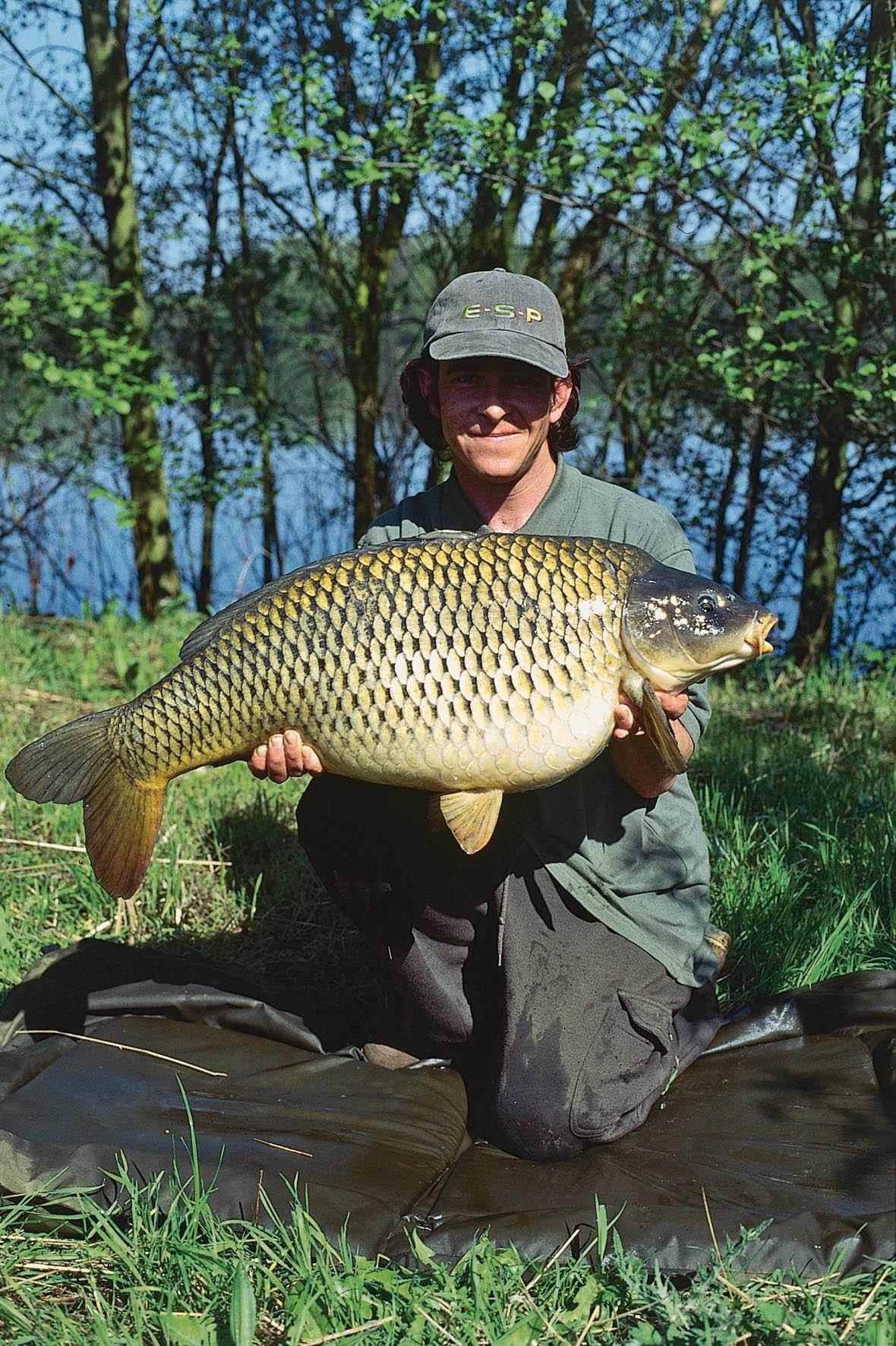
Terry Hearn Q&A Part 2
We take a look through the archives today with Terry's first tactical interview piece back in 2005
If you were to be fishing a small- to medium-sized pond, which is highly pressured, what advice have you got to outwit a cunning carp?
“The most important thing is being on the fish and when it comes to rigs, without a doubt, it’s hook points. You don’t need a fancy rig; keep it simple. A bottom bait rig for most people because you can’t go wrong, whereas a pop-up rig has to be tied perfectly and it’s critical everything is right. I’ve seen some of the stiff rigs people are using and it’s not doing them any favours at all. It has got to be tied right otherwise it’s working against you, not for you.
“When I say a bottom bait, I simply mean a boilie straight out of the bag, unbalanced, a length of Snake-Bite or Stealth Skin, with a No Knotted hook on one end and a swivel at the other. I wouldn’t go too long either, six- to eight-inches. The hook point is without a doubt the most important part though.
“I bet if we went to a lake today and got ten anglers to all reel in their two rods I reckon more than 50% of those rigs would have blunt hooks. People aren’t careful enough with their hook points and seem to take it for granted that all the hooks should be sharp. They are sharp, but they aren’t super sharp which is what they have got to be. Every other species we fish for we strike when we get a bite – the float goes under, the quiver tip goes round, but in carp we expect them to hook themselves, but if we’re doing that then we’ve got to have the sharpiest hook we can possibly get.”
Do you think because anglers are using blunt hooks, the carp are picking up the hookbait, but because the hook’s not sharp they’re getting away with it?
“All the time. It has nothing to do with the rig or lead set-up, it’s simply because the hook’s blunt. Even a sharp hook can be spat out, but a lot of things I hear about the carp moving the leads or they’re missing twitches, in my experience that doesn’t happen. Whenever I’ve been cleared out by a fish, I can’t ever remember them moving the lead. They’ve either not taken the hookbait into their mouth in the first place or they’ve spat it before they’ve even hit the lead. And normally they carry on feeding as well. It’s rare for them to be spooked off by it. If you don’t know anything about it at your end, i.e. you haven’t had a take or any indication, then they have normally cleared you out and gone because all the bait has gone.”
Have you actually seen fish come in on your baited patches and pick the hookbait up and spit it out?
“Oh yes, the most recent was back in the summer of 2004 on the Relief Channel with the second biggest mirror in there. It done me for definite for two mornings on the trot and later on for a third time, but I can’t be 100% sure; it may have just hit the main line or brushed alongside the leader. But for certain, I saw it pick up my hookbait twice and then spit it out. That one was really spooked by it.”
We can imagine for a lot of people, if they saw a good sized carp feeding in the margins, the buzz and excitement would be overwhelming and because of this they might rush things and get it wrong, causing the fish to spook. So can you run us through how you would approach the situation?
“Say if the wind was hitting into one bank and you’d found one feeding in the margin. Obviously the first thing you would want to do is get a bait exactly where that fish is feeding – that is what you want to do, but you can’t do that because the fish is feeding there at that time. And you’re not going to be able to do that until it has moved off. When it does move off, it’s going to be somewhere else and that’s where you’d want it then! So while that fish is feeding on that spot – and although that is the spot you’d ultimately like to get your bait, first things first, set a trap either side of it, or close by – obviously depending how many rods you’re using. But set a trap close by in the next best spot.
“The wind might be hitting the margin, but rippling slightly to the right, so you might know what direction that fish will be going in. So go down the bank a little and set a trap there. Lay it in the buzzer and then go back to the spot where you originally found the fish feeding. The main thing is getting the rods in the water. You’re never going to get them unless you’ve got a bait in the water.
“Nearly always when I find them feeding in the edge, I go for a straightforward bottom bait. Don’t go too long on the hooklink either: six- to seven-inches; I rely on the hook point sharpness for the effectiveness of the rig. I then might introduce a little bit of crumb or pellet and I always throw in four or five whole baits. It’s always little traps when I’m fishing in close, because it isn’t as though you’re attracting the fish into the area. It isn’t like an open water situation; the fish are already there so you aren’t going to need a lot of bait. It amazes me when I see people fishing in the edge and they pile in loads of hemp, pellets… It isn’t necessary.”
So do you ever have any complete nightmares, when it all goes wrong? Can you give us an example?
“It goes wrong loads of times! I can’t think of any straight off the top of my head, but yeah, of course it does, it goes wrong all the time, just the same as anyone else. But when it goes wrong, it really goes wrong!”

Do you think there are still any unknown big fish still around?
“Unknown big fish? I don’t know… No, I don’t think so. Not totally unknown; there are quite a few relatively unknown that have been caught half-a-dozen times but kept quiet without a doubt. I was on one of the web forums the other day and I was gob-smacked by the number of people who genuinely think there are thousands of forties and hundreds of 50lbers out there. There were a couple of sensible posts, one from Milky (Gary Lowe) who said he knew of 11 x 50’s. I’ve got to be honest, that’s two more than I know of but that’s the sort of figure you’re looking at.”
The Hinged Stiff Rig: it’s massively popular right now but what was the main key/element that anglers were getting wrong when tying it up?
“Most of it! At the shows I will tie them up and you’re all careful and keep everything dead straight; you use the baiting needles for the loops, you put a little curve in the Bristle Filament pop-up section – it all looks lovely. You then hand it over to them carefully by the swivel and you can see straightaway whether they are going to be able to do it themselves by the way they handle the rig. Most people hold the rig in the middle of the hooklink and when it is handed back to you it’s a real mess and you just know that angler would cast it out like that. And then you’ll pass it to another person and you can instantly tell the difference – he’s holding it carefully; he’s looking at it; he’s taking it in.
“In all honesty, with some anglers they’re better off with a bottom bait – a straightforward bottom bait, or, if it is going to be a pop-up, then a tub of split shot and a pot of pop-ups and it will work better for them. The Stiff Link is one that really, really must be tied right – it’s so important.”
But for those anglers who wish to use this rig, ‘The Stiff Link’, what about the pop-up itself? Does it need to be super buoyant?
“Yeah it does. That is one of the most important things with it, the pop-ups do have to be buoyant. Not over buoyant – you don’t want a monster blob of putty on the swivel. You should know your pop-ups and you should have room for adjustment. You should have enough putty on there to be able to adjust it. So say if it was cast out for a couple of hours and you reeled it in, you should be able to pinch a little bit of putty off and then it’s back to critically-balanced again.
“Most of the time I don’t fish them that critical; most of the time I fish them pinned down on the deck, especially over the last few months when I’ve been fishing with the ‘Choddy Rig’ i.e. the pop-up section fixed directly on the leadcore so it’s pinged to the deck and once you’ve caught them like that and you’re nailed, really it blows the ‘critical-balance’ thing right out of the window.”

Have you found there to be a certain length at which you fish the boom section to be most effective?
“Yeah, no boom at all! Honestly. It has taken me years to get my head around it. Back when I did the video with Lee Jackson, we were fishing a Cambridgeshire lake, fishing for the Big Blue One, or whatever we called it – some silly name! But, that was the lake where I used it without the boom and fished it with just the pop-up section on the leadcore. I had three fish like that and was amazed at the hook holds. The Stiff Link has always been good for hook holds, but this was better – an inch, two-inches back in the mouth, it was incredible.
“It should have made me realise at the time that you didn’t need the boom, but when I’d so many of my better fish, my target fish, using a boom, it was very hard for me to get my head around it and change. It has just been over the last few months where we have been using it all over the place. This last winter I have used it on seven different lakes, and rivers, and it has worked everywhere. The Chod Rig – I’m sold on it, and is the rig I will be using all the time. Awesome!”
“Now I’d like to think of a way of fishing a bottom bait with it. Some sort of bottom bait set-up, with an ultra short hooklink, but away from the lead. I’m sure that’s one of the main reasons why it’s so effective, because the hookbait is away from the lead.”
Your bottom bait rig set-up is very simple, especially when compared to your pop-up rig, why is the bottom bait rig so much simpler?
“For a start, I change them so often. As I’ve stated, the hook point is the most important thing to me, and the amount of hooks I go through when using bottom rigs is incredible. My tackle box goes from empty to filled with just rigs! I’m so fussy about hook points, so because of this it has to be a quick and easy rig to tie.
“I don’t bother with tubing i.e. the line-aligner; I just put a bend in the hook, around the eye to help it turn, so it will flip. Admittedly, it won’t turn as quick as a line-aligner, but I’ve never had a problem.
“With bottom bait rigs there is still room for mucking around. I have mucked around a bit with a balanced bait on it with a split shot. I tie the rig exactly the same as my normal bottom bait, with a hook Knotless Knotted on to the end, with a normal length Hair but instead of a bottom bait straight out of the bag, I put on a cork dust one and a split shot on the Hair. I will pick out a little bit of the cork dust from the underneath the boilie where the Hair goes through with a baiting needle and then slide the shot into it, so the shot is on the underside of the bait and that just ensures the hook is always underneath the bait, both when it’s laying on the bottom so the hook is less visible, and also when it goes into the carp’s mouth, the hook is always on the underside. Whereas the other way round, with a straightforward bait out of the bag, I find you can get dodgy hook holds from time to time.”
And finally, Terry, can you give us a quick rundown on how an average week pans out for you as a full-time angler?
“Of course I can, but it varies a lot, it really does. Weekdays are when I am generally fishing and the weekends are when I catch up on all my stuff at home – working and all the rest of it. If I have got all that done, then I’ll be out all the quicker. Since July, I’ve got a house which needs loads of work, so I’ve been quite busy on that at the weekends as well. I’ve got the busy time coming up – spring, and with spring comes the shows! So that’s another thing to add to my weekends.”
Read Part 1 of this Q&A with Terry here!





